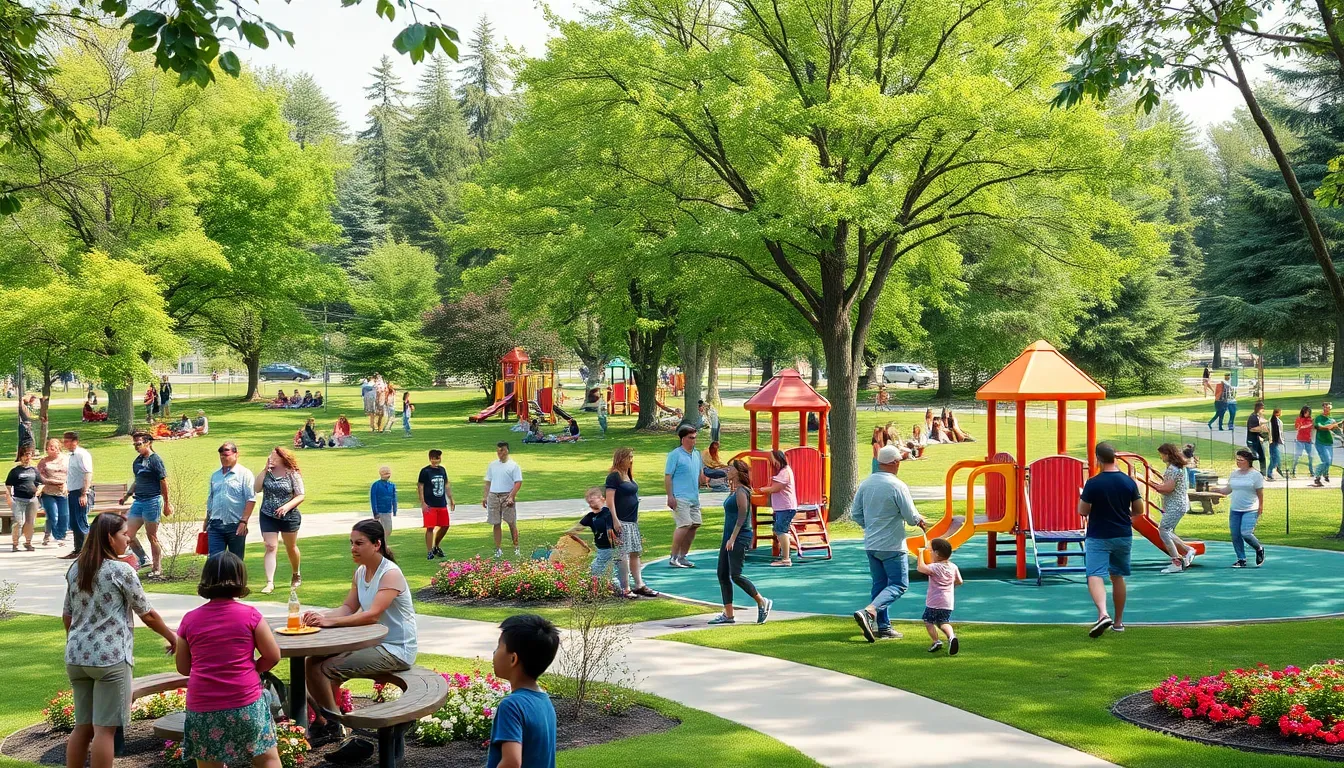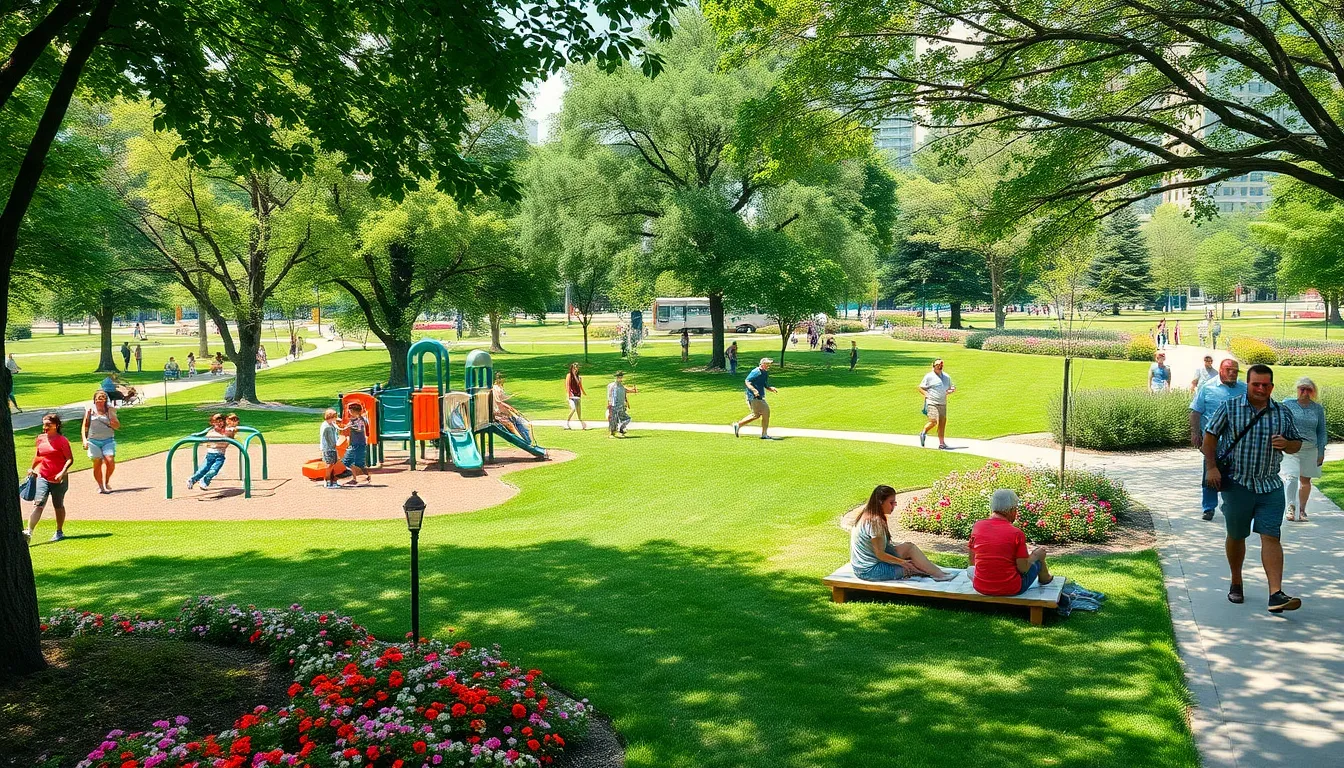Zoning in open spaces might sound like a snooze-fest, but it’s actually the secret sauce that keeps communities thriving. Imagine a world where parks, playgrounds, and picnic spots aren’t just random patches of grass but well-planned havens that cater to everyone’s needs. It’s like organizing a party—nobody wants to see the cake next to the muddy boots!
Table of Contents
ToggleOverview of Zoning in Open Spaces
Zoning in open spaces facilitates planned development and enhances community interactions. Effective zoning creates distinct areas, such as parks, recreational zones, and social gathering spots, contributing to a cohesive environment. Parks allow residents to connect with nature, while playgrounds offer children safe areas for play.
Designating specific zones encourages diverse activities, promoting an engaging community atmosphere. Public spaces can include gardens, sports facilities, and event venues, catering to different needs. Integrating these elements elevates quality of life and fosters community bonds.
Regulatory frameworks guide the zoning process, ensuring that land use aligns with community objectives. Local governments often collaborate with urban planners and residents to identify needs and preferences. They assess available space, demographics, and environmental considerations to create efficient zoning plans.
Successful zoning involves strategic placement of amenities, making services easily accessible. Consideration of walkability, safety, and aesthetics plays an essential role in this planning. Proper zoning reduces congestion and enhances the overall experience of public spaces, encouraging residents to engage with their surroundings.
Communities benefit from thoughtfully zoned open areas through improved social interaction, health benefits, and economic growth. Ultimately, zoning acts as a tool for enhancing the livability and functionality of community spaces, ensuring they meet the evolving needs of residents.
Importance of Zoning in Open Spaces

Zoning in open spaces significantly enhances community functionality and vibrancy. Thoughtful layout planning ensures that parks, playgrounds, and gathering areas serve the diverse needs of residents.
Environmental Benefits
Open spaces with effective zoning improve urban ecology. Designated green areas filter air pollutants, support local wildlife, and promote biodiversity. These spaces often include native plants that require less water and maintenance. Additionally, strategically placed trees provide shade and help mitigate urban heat effects. Protecting natural resources through zoning enhances overall environmental quality and fosters community pride.
Social Benefits
Zoning promotes social cohesion by creating spaces that encourage interaction. Such areas allow various community members to gather for activities like sports, cultural events, and leisure. Enhanced accessibility increases participation in these communal spaces, which fosters inclusivity. Social zones, like playgrounds and picnic areas, contribute to stronger neighborhood ties. Ultimately, these elements enrich residents’ quality of life while fostering a sense of belonging.
Types of Zoning Regulations
Zoning regulations play a vital role in shaping open spaces. Different types of zoning approaches cater to specific community needs and goals.
Form-Based Zoning
Form-based zoning focuses on the physical form and design of buildings, rather than separating land uses. This approach emphasizes the relationship between structure and public spaces, ensuring new developments align with community aesthetics. For instance, regulations dictate building heights, architectural styles, and streetscapes, creating cohesive neighborhoods. Streets serve as social connectors, enhancing walkability and encouraging pedestrian activity. This method benefits communities by fostering environments that prioritize public engagement while maintaining consistent visual appeal.
Performance Zoning
Performance zoning shifts the focus from strict use designation to the outcomes of land use. This approach allows for flexibility in how spaces are utilized. For example, land may be designated for mixed uses, provided that it meets specific performance criteria regarding noise, traffic, and environmental impact. Communities gain the advantage of adaptability, fostering innovation in land use while ensuring that development aligns with broader community objectives. By focusing on measurable performance outcomes, this zoning type supports sustainable practices while facilitating diverse activities within open spaces.
Challenges in Implementing Zoning in Open Spaces
Implementing zoning in open spaces presents several challenges that can hinder development and community satisfaction.
Community Resistance
Resistance from community members often complicates zoning efforts. Concerns can arise over changes to neighborhood aesthetics or potential increases in traffic. Misunderstandings about zoning benefits lead to opposition, as residents may fear loss of green space or changes in property values. Community engagement plays a vital role in addressing these issues. Effective communication helps to clarify zoning intentions, emphasizing benefits such as improved safety and enhanced recreational opportunities. Building trust with residents can ease tensions and foster collaboration in the planning process.
Legal Constraints
Legal constraints also pose significant hurdles in zoning efforts. Local regulations may limit the scope of zoning changes or impose strict requirements for public engagement. Navigating complex zoning laws requires thorough knowledge of legal frameworks. Conflicting interests among stakeholders can cause delays in the zoning process. Securing necessary permits necessitates careful planning and compliance with state and federal laws. Working closely with legal experts can streamline procedures and ensure adherence to all requirements, allowing for smoother implementation of zoning initiatives.
Successful Case Studies
Zoning in open spaces has led to remarkable projects that highlight its effectiveness. These case studies exemplify the benefits of thoughtful land use.
Urban Parks
Successful urban parks showcase the power of zoning to transform communities. For instance, New York City’s Central Park combines scenic landscaping with active recreational options. Local planners designed it to optimize accessibility, ensuring pedestrians can easily navigate through green spaces. Another example is Millennium Park in Chicago, which integrates art installations and performance spaces, fostering cultural interaction. These parks not only enhance aesthetic appeal but also support biodiversity by providing habitats for urban wildlife. Community members experience increased mental well-being and social engagement through organized events and activities held in these parks.
Recreational Areas
Recreational areas demonstrate the importance of zoning in supporting community health and well-being. The Golden Gate Park in San Francisco emphasizes diverse activities, allowing for sports, picnicking, and nature walks. Planners designed these areas with safety and accessibility as priorities, ensuring pathways connect to surrounding neighborhoods. Similar success can be seen in Griffith Park in Los Angeles, which combines hiking trails, sports facilities, and educational programs. By zoning these spaces effectively, agencies enable residents to engage in physical activities and foster social connections, ultimately promoting a vibrant community atmosphere.
Conclusion
Zoning in open spaces is essential for fostering vibrant and functional community areas. By thoughtfully organizing parks and recreational zones, communities can enhance social interactions and promote well-being. The strategic placement of amenities not only improves accessibility but also supports environmental sustainability.
Addressing challenges like community resistance and legal constraints is vital for successful implementation. Engaging residents and collaborating with urban planners can ensure zoning efforts align with community needs. Ultimately, effective zoning transforms open spaces into thriving hubs that encourage connection, promote health, and enrich the quality of life for all residents.





